When you think of Korean food, what’s the first thing that comes to mind? Kimchi certainly pops up, plus fried chicken, cheese-loaded dishes, barbecued meats... It can certainly be a gluttonous cuisine to indulge in. Something that does not usually come to mind when thinking of Korean food is plant-based modern fine dining. Soil to Soul is here to change that.
Opened recently at K11 MUSEA, Soil to Soul is a restaurant that values wellness, tranquility and nature. Although you walk through the mall to get to the restaurant, Soil to Soul manages to make you forget that you’re dining in one of Hong Kong’s most popular shopping destinations. The entrance is quite striking with its earthy tones and gold touches. The interior is peaceful, adorned with wood and stone. The temple- and Buddhist-inspired decor along with a soundtrack of nature sounds certainly made us feel like we were out of the city. If you’re fortunate enough to get a good table, you’ll also enjoy gorgeous views of Victoria Harbour.

The menu is designed by Chef Gu Jin Kwang, an expert in eco-friendly and vegan food. The menu is vegetarian and vegan friendly, with only a few dishes containing honey and yoghurt. Almost all the ingredients are found in nature and are served with the purpose of nourishing the body and soul. Adhering to the Buddha-Dharma teachings, Chef Gu avoids five pungent ingredients believed to distract the mind with impure thoughts: garlic, spring onion, leek, chive and onion. Chef Gu also extends this to salt and sugar, instead using purified salt crystals and green plum sugar extract. The rice is exclusively sourced from Icheon, which is said to have Korea’s finest grains, and the soy sauce is from a temple in Korea, fermented for 5–10 years.
The temple tasting menu highlights the restaurant’s signature dishes and seasonal ingredients in six courses ($598/person) or eight courses ($788/person). While intended for dinner, the tasting menu is also available at lunchtime while dining restrictions are ongoing.
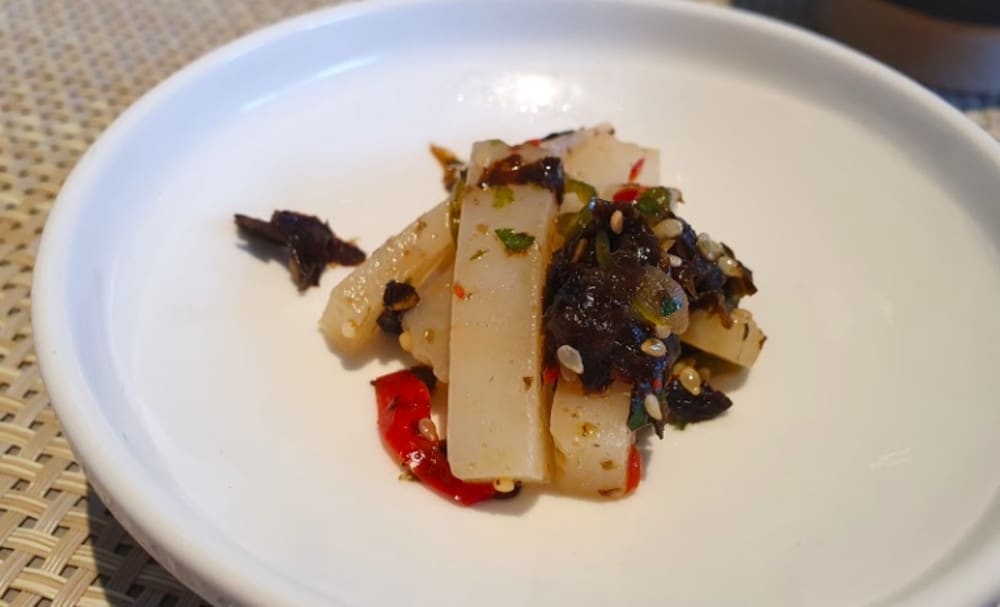
The temple tasting menu began with an amuse-bouche of turnip and seaweed. This was a light start to the meal with its subtle, clean flavours. This was followed by a sweet yuzu drink as a palate cleanser.

Next up was a dish showcasing an ingredient that, to my knowledge, I had not tasted before: perilla seed. The perilla plant is native to Southeast Asia, grown in Korea and used for its oil in Korean cuisine. Perilla oil is exceptionally high in omega-3 fatty acids. The perilla seed with taro soup had a grainy texture that may not be everyone’s cup of tea, but I enjoyed the nutty aromas. The soup was served with a small portion of jang-ajji (pickle)-wrapped rice, which was lovely and fragrant.

A gorgeously plated dish that resembled a spring garden, the seasonal vegetable salad was served with lotus root and potato. While not particularly memorable, this dish was a welcome palate cleanser after the soup.

The next course was a truly standout dish. The braised eggplant with fresh tomatoes was absolutely dripping in umami flavour from the eatery’s signature fermented soy sauce. Just the right amount was added so that the flavour was not overpowering. The fresh, sweet tomatoes worked well in cutting through the strong savoury taste. I only wish it had been a larger portion!
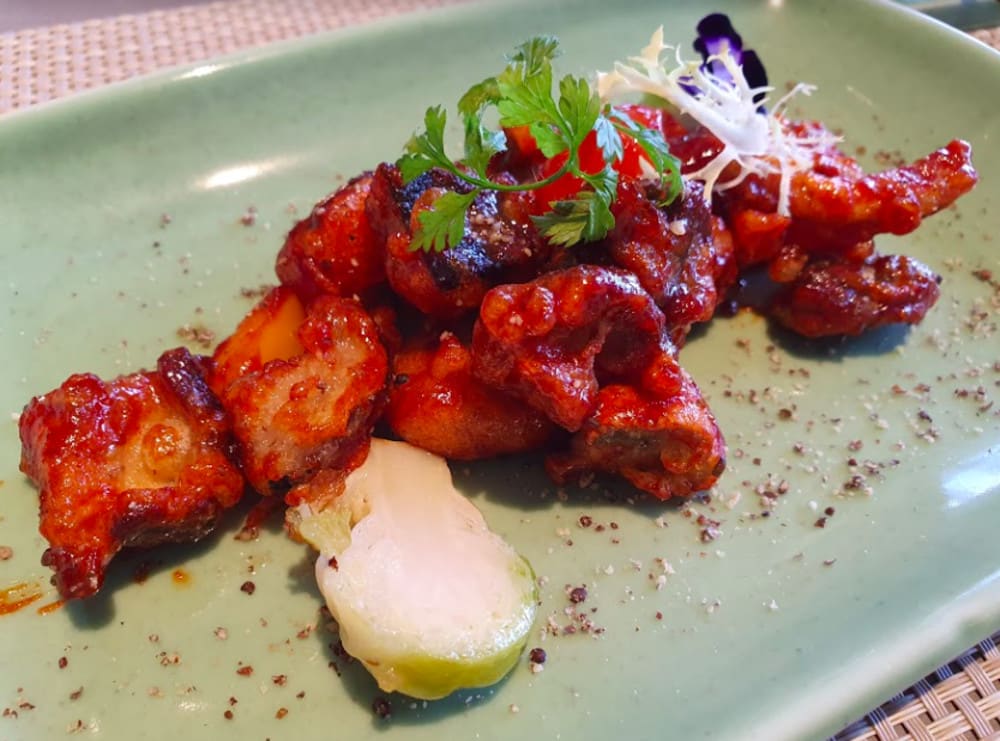
Another memorable dish, the sweet and spicy mushrooms were lightly battered and fried, giving a satisfying crunch and tangy sweetness. An excellent vegetarian alternative to a sweet-and-sour pork or chicken dish, the sauce was not too spicy but added a delicious kick.
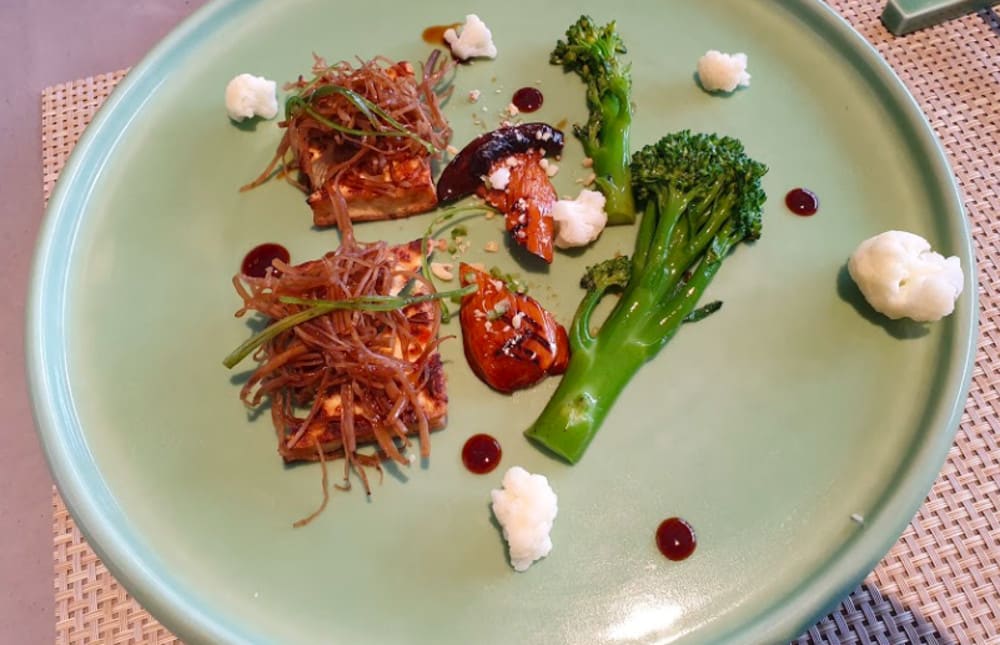
The main course was burdock and tofu with king oyster mushroom. This tofu is imported from Korea and noticeably firmer than its Chinese counterparts. Burdock itself does not have much flavour and has a chewy sort of texture, but it was soaked in the same fermented soy sauce, which once again packed quite a punch. The few dots of soy sauce on the plate may seem innocuous, but they provided plenty of umami goodness for the broccolini and cauliflower.
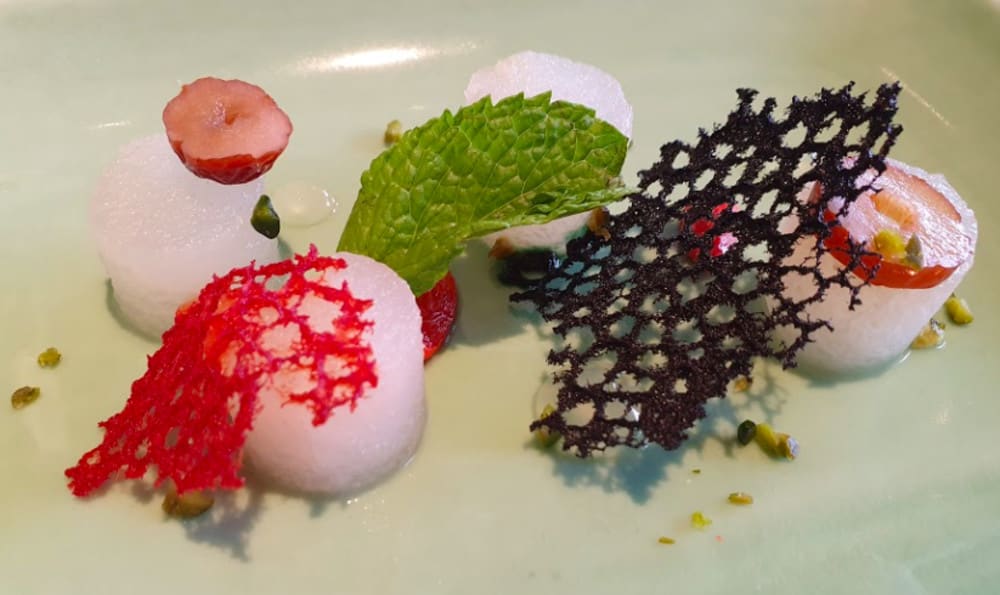
Dessert came in the form of poached pear with red dates, cinnamon and star anise. Unlike in Chinese desserts where poached pears are served whole, the pear was served in delicate cylindrical shapes. A refreshing end to the meal.
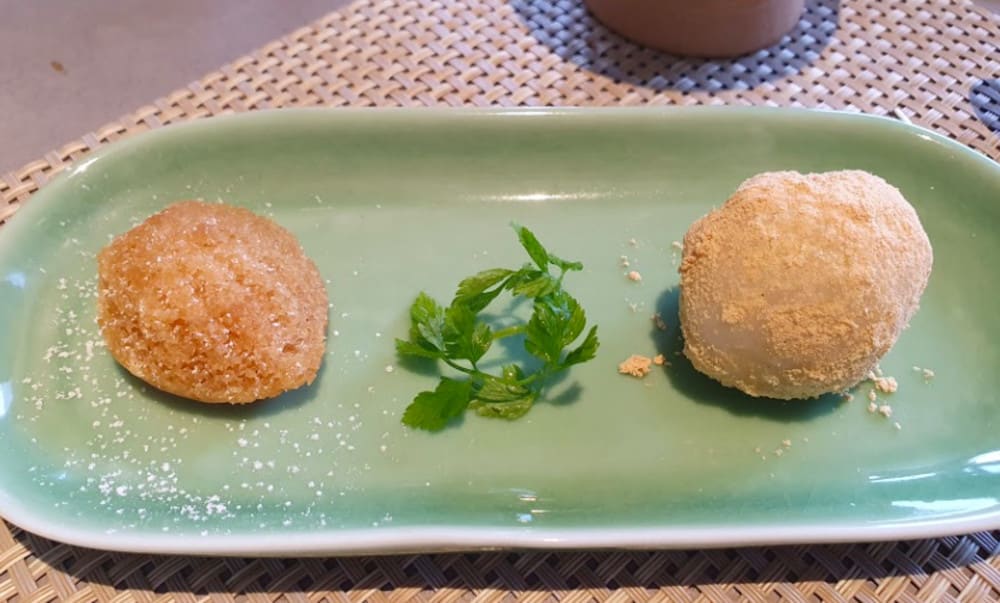
We ended our meal with petits fours in the form of a red bean mochi and a madeleine. These were the ideal sweet treats to finish on. The madeleine in particular was wonderfully light and fluffy, with a light spice that was reminiscent of Christmastime.
Verdict
Soil to Soul is unlike any Korean restaurant I have visited before. More than a meal, visiting Soil to Soul is a tranquil experience that takes you away from the hustle and bustle of city life. Chef Gu does a wonderful job in presenting clean, nutritious dishes that highlight Korea’s diverse natural ingredients, textures and flavours. While these unique textures may not suit a particularly picky eater, if you’re looking for something a little different, Soil to Soul is certainly worth a visit. We’ll be sure to return to try some of their soju-inspired cocktails!
7/F, K11 MUSEA, Victoria Dockside, 18 Salisbury Road, TST, 2389 9588, info@soiltosoul.hk
This write-up is based on a complimentary media tasting provided in exchange for an honest review and no monetary compensation. The opinions expressed here represent the author’s.
For more reviews like this, like Foodie on Facebook











